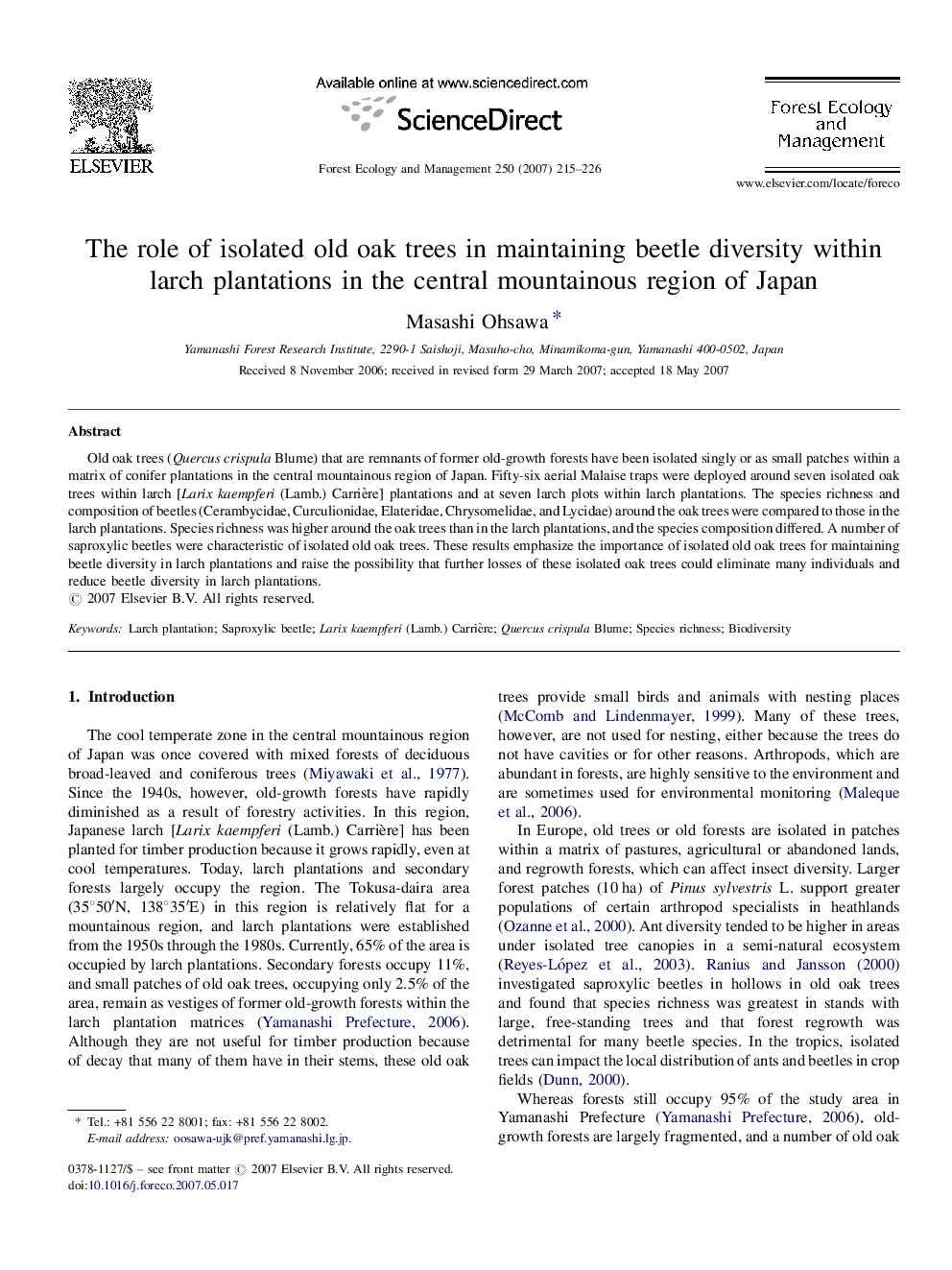| Article ID | Journal | Published Year | Pages | File Type |
|---|---|---|---|---|
| 90419 | Forest Ecology and Management | 2007 | 12 Pages |
Old oak trees (Quercus crispula Blume) that are remnants of former old-growth forests have been isolated singly or as small patches within a matrix of conifer plantations in the central mountainous region of Japan. Fifty-six aerial Malaise traps were deployed around seven isolated oak trees within larch [Larix kaempferi (Lamb.) Carrière] plantations and at seven larch plots within larch plantations. The species richness and composition of beetles (Cerambycidae, Curculionidae, Elateridae, Chrysomelidae, and Lycidae) around the oak trees were compared to those in the larch plantations. Species richness was higher around the oak trees than in the larch plantations, and the species composition differed. A number of saproxylic beetles were characteristic of isolated old oak trees. These results emphasize the importance of isolated old oak trees for maintaining beetle diversity in larch plantations and raise the possibility that further losses of these isolated oak trees could eliminate many individuals and reduce beetle diversity in larch plantations.
